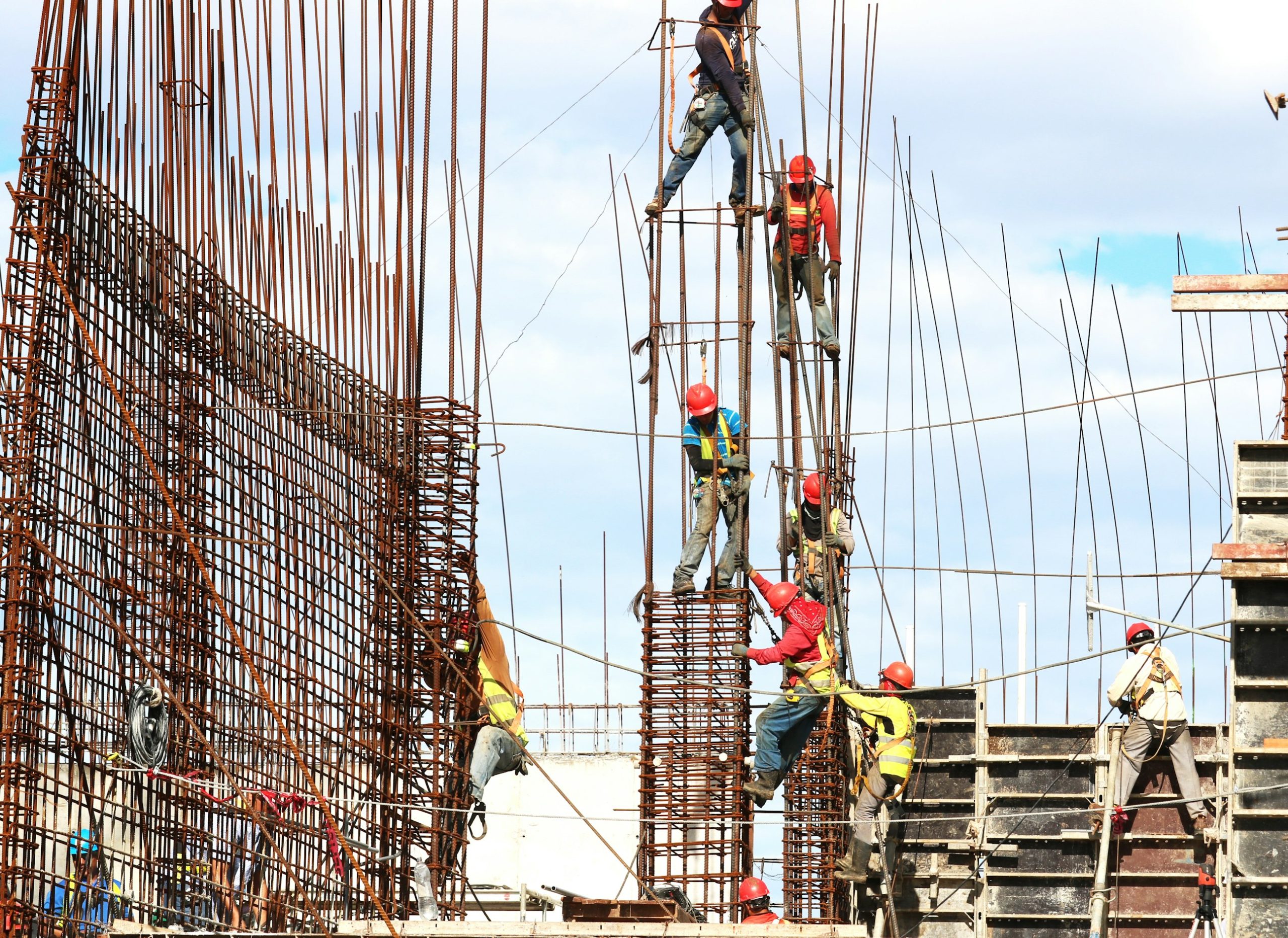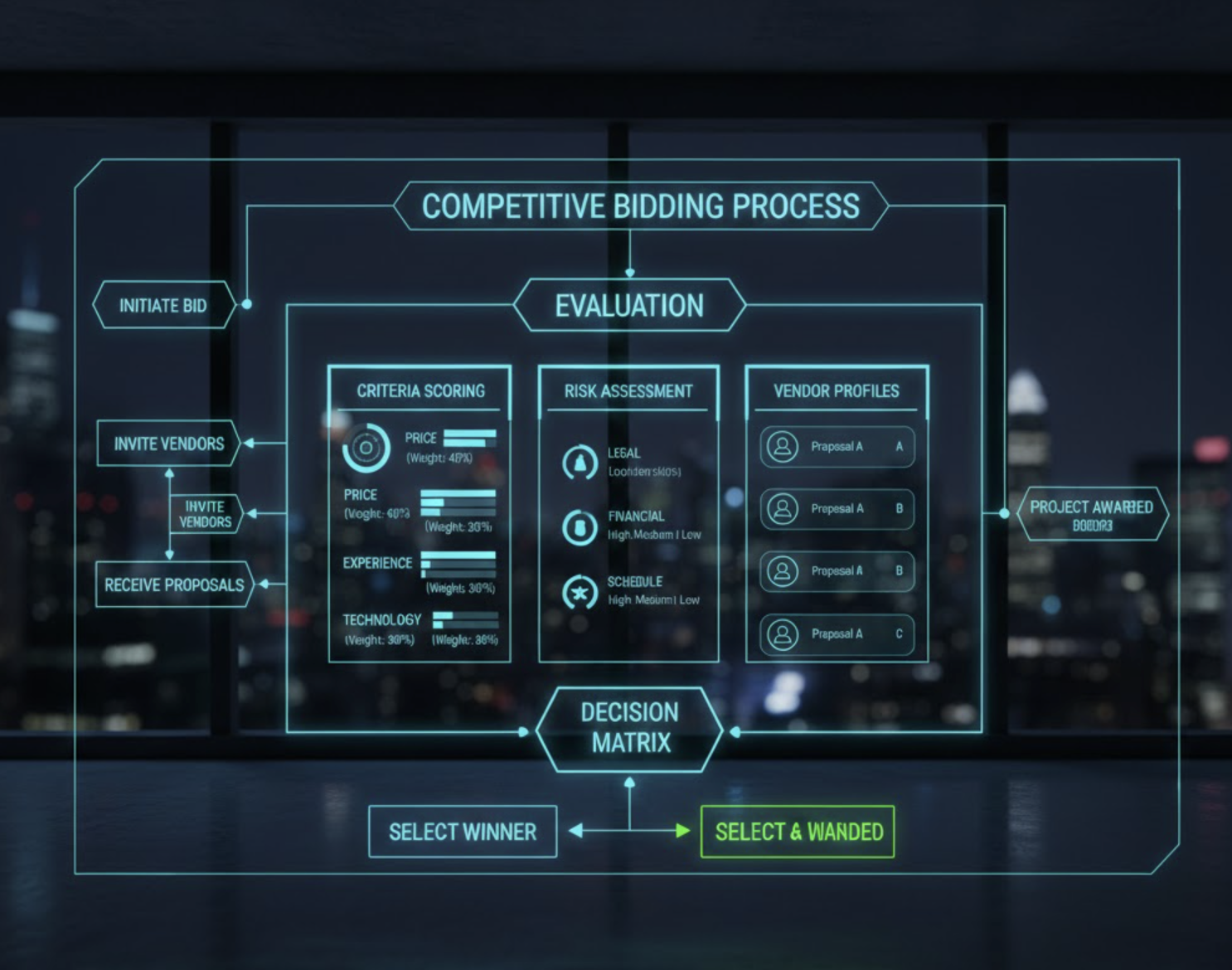Why Most Construction Projects Suffer from Poor Tender Evaluation—and How to Fix It
Construction projects frequently encounter challenges that can be traced back to inefficient tender evaluation processes. Many organizations, unfortunately, experience poor tender evaluation due to a range of factors, ultimately affecting project outcomes. By leveraging advanced construction project management software like Zepth, you can tackle these pivotal issues head-on and enhance the overall efficiency of your tender management process.
Key Reasons for Poor Tender Evaluation in Construction
1. Inaccurate or Incomplete Tender Documents
At the beginning of many construction projects, tender documents often lack clarity or contain errors, which leads to confusion during evaluation and bid submission. Incomplete documentation, such as missing specifications, drawings, or requirements, results in bids based on unsafe assumptions or scope gaps. These uncertainties manifest in increased risks, including disputes, rework, and cost overruns.
2. Overreliance on Lowest Price
Another common reason for poor tender evaluation is the tendency to award contracts to the lowest bidder without considering crucial factors such as technical capabilities, previous performance, and construction risk management. This approach often results in the selection of unqualified contractors who underbid with the intent to recover costs through change orders or by compromising quality.
3. Poorly Defined and Weighted Evaluation Criteria
Ambiguity in scoring methods and inconsistent application of weights for price and non-price factors can lead to unreliable or biased results. When evaluation frameworks become overly subjective or opaque, they breed disputes and undermine stakeholder trust, further complicating the tender selection process.
4. Lack of Transparency and Documentation
Non-transparent scoring processes can create challenges, complaints, or legal disputes post-award. Adequate record-keeping during the evaluation stage is critical to maintain credibility and support project outcomes.
5. Inconsistent and Unstructured Evaluation Process
A lack of a clear step-by-step process can lead teams to apply criteria inconsistently or overlook necessary checks (e.g., regulatory or health and safety compliance), which contributes to non-comparable bids and missed risks.
Essential Best Practices and How to Fix Tender Evaluation
1. Invest in Comprehensive, Well-Structured Tender Documents
Begin by producing clear and complete specifications that ensure all bidders estimate based on the same scope. This practice reduces costly assumptions and disputes, setting the foundation for a successful evaluation process.
2. Define Clear, Balanced Evaluation Criteria
Establish an evaluation framework that integrates price, technical skills, experience, delivery methods, and environmental management—weighting these factors transparently. For example, a weighting structure could assign 40–70% for price, coupled with 10–20% for technical expertise, and 5–20% for experience.
3. Apply Consistent, Transparent Scoring Methods
Utilize matrices and standardized scales (e.g., 0–10 for qualitative criteria) to evaluate bids consistently. Document rationale and insights for each score to ensure transparency and reliability. Normalizing scores across different bids allows for fair comparisons, particularly when qualitative criteria are involved.
4. Separate Technical and Commercial Scoring
Implement separate evaluations for non-price criteria before revealing financial bid details. This method maintains objectivity and reduces potential bias in favor of low prices during evaluation.
5. Moderate and Document Scores
Encourage evaluators to score independently before engaging in a discussion to reach a consensus. Documenting all decisions ensures accountability and audit trails that may be required later.
6. Level (Standardize) Bids Before Comparison
Adjust bids to account for variations or clarifications, ensuring all submissions are comparable. This process prevents favoritism towards bids with hidden costs or inconsistent assumptions.
7. Embrace Digital Platforms and Continuous Improvement
Adopting detailed tender management solutions, such as Zepth, enables improved document control, scoring automation, and robust analytics that reduce errors and enhance transparency, ultimately speeding up evaluation.
Zepth’s Role in Transforming Tender Evaluation
Zepth offers a comprehensive suite of features designed to enhance tender evaluation processes effectively. Managing tender documents can be streamlined for accuracy and version control through Zepth’s capabilities:
- Centralized Document Management: Zepth facilitates precise, version-controlled distribution of tender documents, ensuring all bidders access up-to-date and accurate information.
- Customizable Evaluation Frameworks: With Zepth, teams can create detailed and transparent scoring systems that assign weights for price, technical expertise, and qualitative criteria based on project priorities.
- Automated Scoring and Moderation: Evaluators score bids within the Zepth platform, utilizing built-in moderation features to consolidate and document decisions transparently.
- Bid Comparison and Tender Leveling: Zepth’s tools facilitate seamless like-for-like analysis, highlighting discrepancies and ensuring standardized submissions.
- Audit Trails and Compliance: Every score, comment, and decision is logged in Zepth for full accountability and regulatory adherence.
- Continuous Process Optimization: Leverage Zepth’s analytics and reporting to track historical tender performance and refine evaluation strategies over time.
For more details on how Zepth can streamline your tender evaluation, visit the Tender Management Module.
Emerging Innovations and Use Cases
Recent advancements in construction technology are introducing powerful tools to improve tender evaluation:
- AI-Assisted Tender Analysis: Utilizing machine learning for flagging risky bids, automating document checks, and suggesting optimal weightings based on historical performance.
- Integrated Risk and Cost Assessment: Digital platforms assessing total cost of ownership, lifecycle impacts, and contractor risk profiles in real-time.
- Collaborative, Cloud-Based Evaluation: Multi-stakeholder panels can remotely review bids, exchange insights, and maintain audit trails, enhancing speed and transparency.
Caveats & Limitations
While the journey towards digital and transparent tender evaluations is crucial, several barriers may need to be addressed, such as:
- Regulatory and cultural barriers in certain markets that hinder fully digital tender evaluations.
- The quantitative weights must be tailored for each project, as overly rigid formulas can create a false sense of objectivity.
- Technology alone cannot resolve all challenges; human oversight and domain expertise remain essential in the tender evaluation process.
By employing industry-leading practices and leveraging Zepth‘s technology, construction firms can significantly improve their tender evaluation processes. Not only does this lead to smarter procurement decisions, but it also fosters a culture of transparency and trust among stakeholders. In an ever-evolving landscape, embracing transformative solutions is key to staying competitive in the construction industry.




